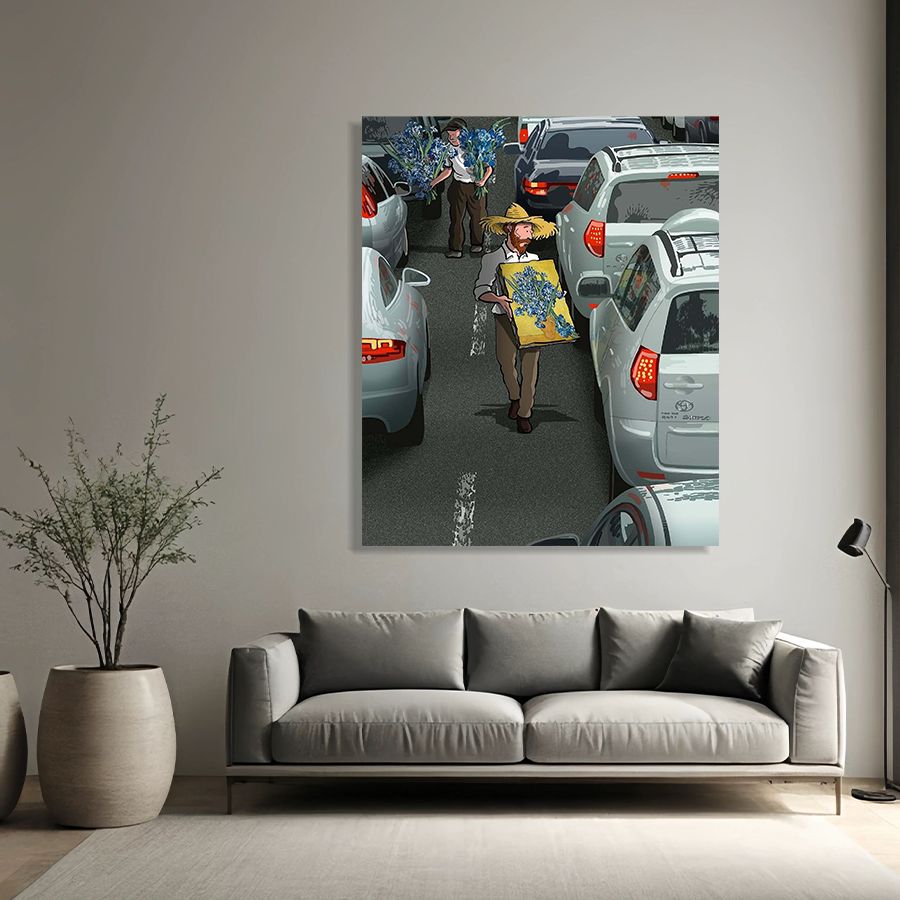Introduction: Where Realism Meets Imagination
In the world of oil painting, few pieces evoke as much emotion and contemplation as “The Art of Weaving Through the Traffic.” This piece merges realism and surrealism, presenting a bustling city scene with cars moving smoothly through traffic, but with a twist—flower vendors and painters are casually navigating this chaotic environment. This delicate balance of what is real and what is imagined invites viewers to question the boundaries of the ordinary and extraordinary.
The Beauty of Realism in Modern Art
Realism in art aims to depict subjects as they truly appear in life, without embellishment or abstraction. The cars in this painting, painted with meticulous detail, mirror real-life vehicles that the viewer is likely familiar with. This meticulous portrayal of everyday objects connects the painting to the viewer’s own experiences in the real world. As Leo Tolstoy once said, “Art is not a reproduction of what is visible to the eye, but an expression of what is experienced.”
In “The Art of Weaving Through the Traffic,” we experience a slice of urban life. The artist captures every detail of the cars—their reflections, the motion of the wheels, and the shadows they cast. Yet, while these elements appear grounded in reality, the overall scene hints at something more.
Surrealism and the Intersection of Imagination
While the cars are realistic, the flower vendors, selling blooms in the middle of traffic, belong to a world that is not entirely bound by the logic of everyday life. This fusion of the mundane with the magical is a hallmark of surrealism, which invites viewers to experience a dreamlike quality, much like Salvador Dalí’s iconic melting clocks.
By juxtaposing the ordinary with the extraordinary, the painting creates a moment suspended between reality and fantasy. This unconventional pairing urges us to question whether the world we see is truly what it seems. As Andre Breton famously stated, “Surrealism is based on the belief in the superior reality of certain forms of association…”
Why Surrealist Oil Paintings Are So Engaging
What makes surrealist oil paintings, like “The Art of Weaving Through the Traffic,” so compelling? Perhaps it’s the power to transport viewers into a space where the ordinary becomes extraordinary. The juxtaposition of cars, often seen as symbols of modernity and progress, with flower vendors—typically associated with slower, more serene environments—forces us to rethink our urban experience.
The intricate realism of the cars in the foreground contrasts with the sense of wonder and impossibility represented by the vendors selling flowers. It is this tension between the real and the unreal that makes surrealist oil paintings like this so intriguing.
Conclusion: The Power of Art to Blur Boundaries
By combining the elements of realism and surrealism, the painting speaks to the tension between the real world and the imagined, urging viewers to contemplate the boundaries between them. Through vibrant colors and detailed oil work, the artist transforms an ordinary moment into something extraordinary, reminding us that art’s power lies in its ability to blur these lines.
